Check valve for heating: action, types, pros and cons + installation diagram
A standard heating system includes many elements. Each of them performs its own task, as a result of which the design works smoothly and clearly. One of these elements is a check valve for heating, which controls the flow of coolant.
We will introduce you to all types of check valves used today in the organization of heating circuits. In the article we presented, their design features are described in detail, and technical specifications are given. Independent craftsmen will find installation manuals and valuable tips from us.
The content of the article:
Why do I need a check valve?
During operation, hydraulic pressure appears inside the heating system, which may be uneven in its various areas. The reasons for this phenomenon are very different.
Most often, this is uneven cooling of the coolant, errors in the design and assembly of the system, or its breakthrough. The result is always the same: the direction of the main fluid flow changes, and it turns in the opposite direction.
This is fraught with very serious consequences until the boiler, or even the entire system, fails, which will require significant repair costs in the future.
For this reason, experts strongly recommend installing a check valve. The device is capable of passing fluid in only one direction. When the return flow appears, the locking mechanism is activated, and the hole becomes impassable for the coolant.
Thus, the device is able to control the flow of fluid, passing it in only one direction.

For normal operation of the system, it is necessary that the device does not create additional pressure, and freely passes to the radiators coolant. Therefore, it is extremely important to correctly select the product.
Varieties of check valve
Despite the fact that all devices of this type perform one task, they have structural and, therefore, operational differences. Let us consider each of these species in more detail.
Disk Type Fixtures
A distinctive feature of the product is the presence of a disk shutter. This is a plastic or metal element, the dimensions of which allow it to completely block the flow of coolant if it starts to move in the opposite direction.
The disc is connected to a steel spring. With direct movement of the fluid, it is in a compressed state. When the direction changes, it straightens and shifts the disk from its place, thereby blocking the pipe.
The valve design also includes a gasket, which allows the bolt mechanism to sit as tightly as possible on the seat. Therefore, in serviceable devices, leakage is excluded.
Disk devices are widely used in the arrangement of domestic heating systems, since they have significant advantages:
- Compactness. The dimensions of the products and their weight are small, which makes it possible to install them on any system.
- Regular maintenance is not required.
- The cost of the device is low.
Of the significant shortcomings, it is worth noting the unsuitability for repair. Therefore, failed valves are immediately replaced with new ones.
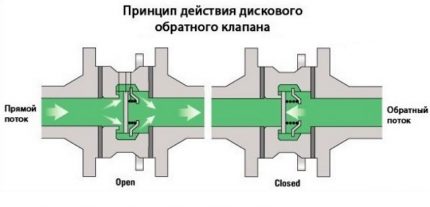
And one more minus is the significant hydraulic resistance created by the device. For some systems, for example, with geothermal heat pumpIt can be critical. Over time, the disk shutter is covered with a layer of mineral deposits, which leads to damage to the device.
Standard butterfly valves, when closed, create some shock loads. This does not affect their performance and technical condition, but water hammer occurs in the system. What is undesirable for her.
Disk devices with an additional mechanism that allows closing the hole as smoothly as possible are deprived of this drawback. Their cost is higher than that of standard analogues.
Ball Check Valves
A metal ball is used as a shutter in devices of this type. It is made of aluminum, steel and other metals. To extend the life of the element is covered with a layer of rubber.
Such a shutter works as follows: when the coolant moves through the device body in the desired direction, it raises the ball, which moves into the upper compartment of the valve.
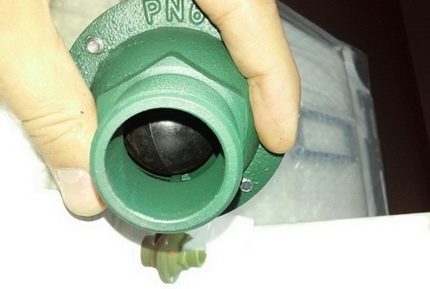
As soon as the direction of movement changes or the flow stops, the ball immediately lowers and closes the pipe. Thus, the movement of fluid in the opposite direction becomes impossible.
The advantages of these valves include:
- reliability - the design does not include rubbing or moving systems, which significantly reduces the possibility of breakage and allows you to work in any position;
- maintainability - the upper part of the valve body is equipped with a removable cover, which provides easy access to the inside of the structure;
- low hydraulic resistance.
Considering the shortcomings, it is worth noting a rather large working diameter. For this reason, it is impossible to use them in household pipelines of small sections.
Ball valves are moody during installation, due to structural features. When installed horizontally, they must be placed with the lid up, otherwise the shutter will not be able to rise to let the water flow through. Based on the same considerations, in a vertical installation, it is necessary to make sure that the liquid moves strictly up.
Ball valves will not be able to function normally in pipelines with low pressure. Since the minimum value at which the sphere locking the passage opening rises is usually 25 bar.
Petal Shutter
A valve for this type of valve is a thin steel plate. It is fixed on a hinged structure that allows it to move.
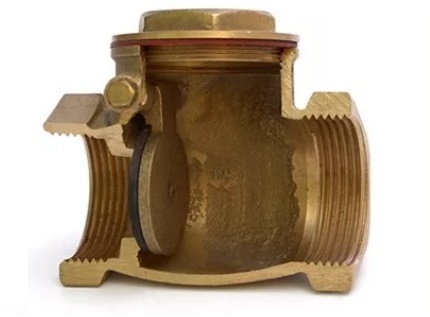
There are two types of flap devices. Single leaf or rotary equipped with a single plate, which can rotate around an axis.
When the coolant moves in a predetermined direction, it lifts the sash, thereby opening the passage opening. When the flow direction changes, the plate lowers. This can be done with or without a spring.
Butterfly valves are designed a little differently. They have two locking plates mounted on a rotary axis and located in the center of the passage opening.
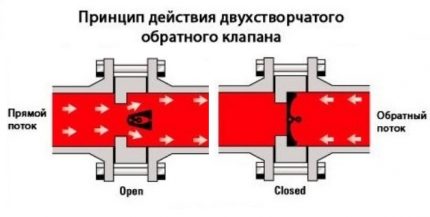
The benefits of using these valves are:
- some models of gravity valves can work without springs, which allows them to be used in gravity systems;
- relatively low cost of devices.
Of the shortcomings, it is worth noting a fairly high hydraulic resistance. This is especially true for bivalve models - the rotary axis is located directly in the center of the bore, which is a significant obstacle to a moving fluid.
For this reason, butterfly valves are used exclusively in high pressure systems.
Lifting Equipment
Lift valves are equipped with a slide valve, which can move freely about a vertically located axis. At the through-hole, there is a seat saddle where the spool is located.
When the fluid is supplied, the force of its pressure raises the shutter, and it moves along the axis, opening an opening for the movement of the coolant. As soon as the pressure of the flow weakens or it changes its direction, the spool will lower into the seat.
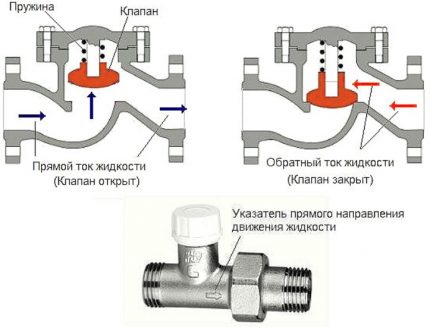
The advantages of these devices are:
- Reliability. The equipment has a fairly simple design, which allows it to work with minimal risk of breakage.
- Low sensitivity to the quality of the coolant.
- The possibility of repairs. For this, a removable cover is located in the upper part of the device body.
Among the shortcomings, it is worth noting the installation restrictions. Due to the design features, they can only be mounted in a strictly vertical position.
Rules for choosing a locking device
Selection of a non-return valve designed for heating system, - the responsible event. If knowledge in this area is minimal, it is best to seek the help of specialists. This ensures that the new heating system is functional and safe.
You need to know that, regardless of their type, all check valves differ in the way they are connected to the pipeline.
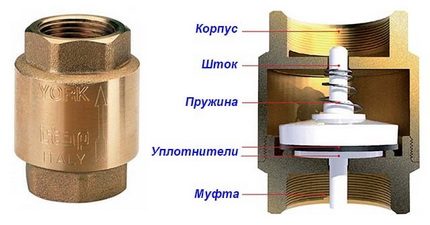
Coupling devices are equipped with a connecting threaded assembly, which greatly facilitates their connection to the highway. Most often, such a unit is equipped with disk valves designed for installation in autonomous heating systems of an apartment or a private house. Their distinguishing feature is a small diameter. Most often, it is not larger than the DU-50.
Flange products are a structure assembled on the basis of a part having holes for attachments. Using the latter, it connects to the main pipeline. A flange joint is much stronger than a threaded joint.
For this reason, flanged valves are widely used in the construction of large diameter pipelines. The most popular devices are ball type.
Interflange devices are designed to be installed between two pipe flanges. They are lightweight and compact. Very often in the flange version produce both types of flap type valves.
On sale you can find check valves that are installed by welding. This option can be used, for example, when arranging heating from polypropylene pipes.
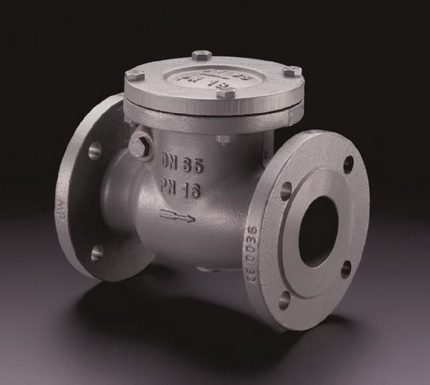
Another important selection criterion is the material from which the device is made. It could be stainless steel. This option is considered optimal for highways with a diameter of less than 0.04 m.
The metal is practically not susceptible to corrosion processes, is able to withstand a load of up to 10 atm. This allows the valve to work in the system without failures and for a very long time, but its cost is quite high. Lower price for brass valves. They are susceptible to corrosion, but this process is very slow, which significantly increases the service life.
However, their mechanical strength is much lower than that of stainless steel. Nevertheless, the loads that arise in the household network, they withstand quite easily. The most durable valves are made of cast iron - they successfully cope with critical pressure values, have significant dimensions and an impressive weight.
Due to the peculiarities of production, only parts bodies with a diameter greater than 40 mm can be made of cast iron. For this reason, they are extremely rarely used to equip autonomous heating systems.
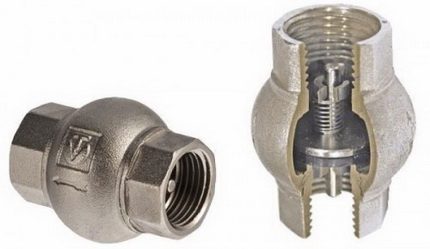
When choosing a non-return valve, you need to remember one more rule - its diameter must exactly match the parameters of the bore. It is very important that the operating pressure of the system does not exceed the maximum permissible values for operation set by the manufacturer of the selected model.
Options for working wiring diagrams
Heating systems are very diverse and the presence of a non-return valve is certainly not in all. Consider several cases when its installation is necessary. First of all, a check valve must be installed on each of the individual circuits in a closed type circuit, provided that they are equipped circulation pumps.
Some craftsmen strongly recommend installing a spring-type check valve in front of the inlet pipe of the only circulating pump in the single-circuit system.They motivate their advice by saying that so pumping equipment can be protected from water shocks.
This is in no way true. Firstly, the installation of a check valve in a single-circuit system is hardly justified. Secondly, it is always installed after the circulation pump, otherwise the use of the device loses all meaning.

For multi-loop systems, the presence of a reverse shut-off device is vital. For example, when two boilers are used for heating, an electric and solid fuel, or any other.
When one of the circulation pumps is turned off, the pressure in the pipeline will inevitably change and a so-called parasitic flow will appear, which will move in a small circle, which threatens with troubles. It is impossible to do without shutoff valves.
A similar situation occurs when using indirect heating boiler. Especially if there is a separate pump for the equipment, if there is no buffer tank, hydro-arrow or distribution comb.
There is also a high probability of the occurrence of a parasitic flow, for the clipping of which check valveused specifically for arranging a branch with a boiler.
The use of shut-off valves is mandatory in systems with bypass. Such circuits are usually used when converting circuits from gravitational fluid circulation to forced circulation.
In this case, the valve is placed on bypass parallel to the circulation pumping equipment. It is assumed that the main mode of operation will be forced. But when the pump is turned off due to lack of electricity or breakdown, the system will automatically switch to natural circulation.
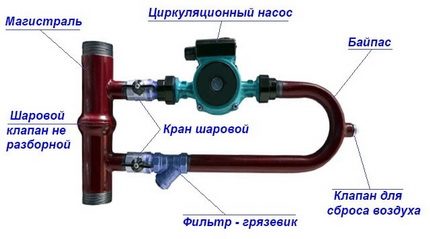
This will happen as follows: the pump stops supplying coolant, the check valve actuator assembly stops testing pressure and closes.
Then, the convection movement of the fluid along the main line is resumed. This process will continue until the pump starts. In addition, experts suggest putting a check valve on the make-up pipeline. This is optional, but highly desirable, as it avoids emptying the heating system for a variety of reasons.
For example, the owner opened a tap on the make-up pipe to increase system pressure. If due to an unpleasant coincidence of circumstances at this moment the water supply is shut off, the coolant simply squeezes out the remaining cold water and goes into the pipeline. As a result, the heating system will remain without fluid, the pressure in it will drop sharply and the boiler will stop.
In the circuits described above, it is important to use correctly selected valves. To cut off parasitic flows between adjacent circuits, it is advisable to install disk or lobe devices. In this case, the hydraulic resistance will be lower for the latter option, which must be taken into account when choosing.

For arrangement of the bypass unit, it is preferable to choose a ball valve. This is due to the fact that it gives almost zero resistance. On the make-up pipe, a disk-type valve can be installed. This should be a model designed for a fairly high working pressure.
Thus, the check valve may not be installed in all heating systems.It is necessarily used in the arrangement of all types of bypasses for boilers and radiators, as well as at branch points of pipelines.
The nuances of competent installation
During the installation of shut-off valves, several rules must be strictly observed:
- The valve is installed strictly in the direction of the coolant flow. In order to avoid errors on the product body there is always a marking in the form of an arrow indicating the working direction.
- To seal the joints, you can use paronite gaskets, provided that they do not reduce the diameter of the bore. Otherwise, the valve will exert a hydraulic pressure greater than planned.
- The device must be installed so that other elements of the heating system do not exert additional pressure on its housing.
- It is highly advisable to place a coarse screen before the check valve. This will make it possible to prevent the ingress of solid particles into the locking mechanism, which, in turn, can lead to a violation of the tightness of the device when closed.
Another important point: before installation, you must again make sure that the valve is selected correctly.
For example, for circuits with forced circulation, any type of device is suitable, and for gravitational systems only a rotary lobe without a spring. Since the coolant moving by gravity will not be able to cope with the resistance of the spring.
Conclusions and useful video on the topic
Video # 1. Where to use check valves:
Video # 2. How to choose the right valves for the gravity heating system:
Video # 3. How to arrange heating feed with a check valve:
The non-return valve is a necessary element of complex heating systems. For circuits with a single circuit, it is usually not needed, except for the arrangement of a make-up pipeline. But if the system is complicated by the connection of a second boiler, boiler or underfloor heating, a device cannot be dispensed with.
It is important to correctly select and install a check valve. This ensures trouble-free continuous operation of the entire heating system.
Want to talk about how your heating system has improved after installing a check valve? Do you have information on the topic of the article that will be useful to site visitors? Please write comments in the block below, post photos, ask questions.

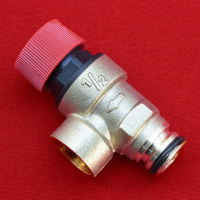 Safety valve in the heating system: types, purpose, diagrams and installation
Safety valve in the heating system: types, purpose, diagrams and installation 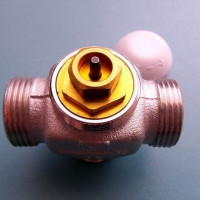 Three-way valve on the heating system: operation, selection rules, diagram and installation
Three-way valve on the heating system: operation, selection rules, diagram and installation 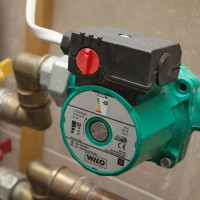 Connection diagrams of the heating pump: installation options and step-by-step instruction
Connection diagrams of the heating pump: installation options and step-by-step instruction 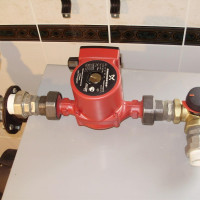 Installation of a circulation pump: types, purpose and features of its installation
Installation of a circulation pump: types, purpose and features of its installation 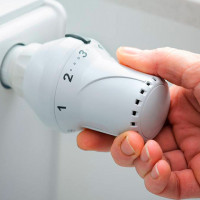 Thermal head for heating radiator: device, functioning + installation procedure
Thermal head for heating radiator: device, functioning + installation procedure  Selection of a circulation pump: device, types and rules for choosing a pump for heating
Selection of a circulation pump: device, types and rules for choosing a pump for heating  How much does it cost to connect gas to a private house: the price of organizing gas supply
How much does it cost to connect gas to a private house: the price of organizing gas supply  The best washing machines with dryer: model rating and customer tips
The best washing machines with dryer: model rating and customer tips  What is the color temperature of light and the nuances of choosing the temperature of the lamps to suit your needs
What is the color temperature of light and the nuances of choosing the temperature of the lamps to suit your needs  Replacement of a geyser in an apartment: replacement paperwork + basic norms and requirements
Replacement of a geyser in an apartment: replacement paperwork + basic norms and requirements